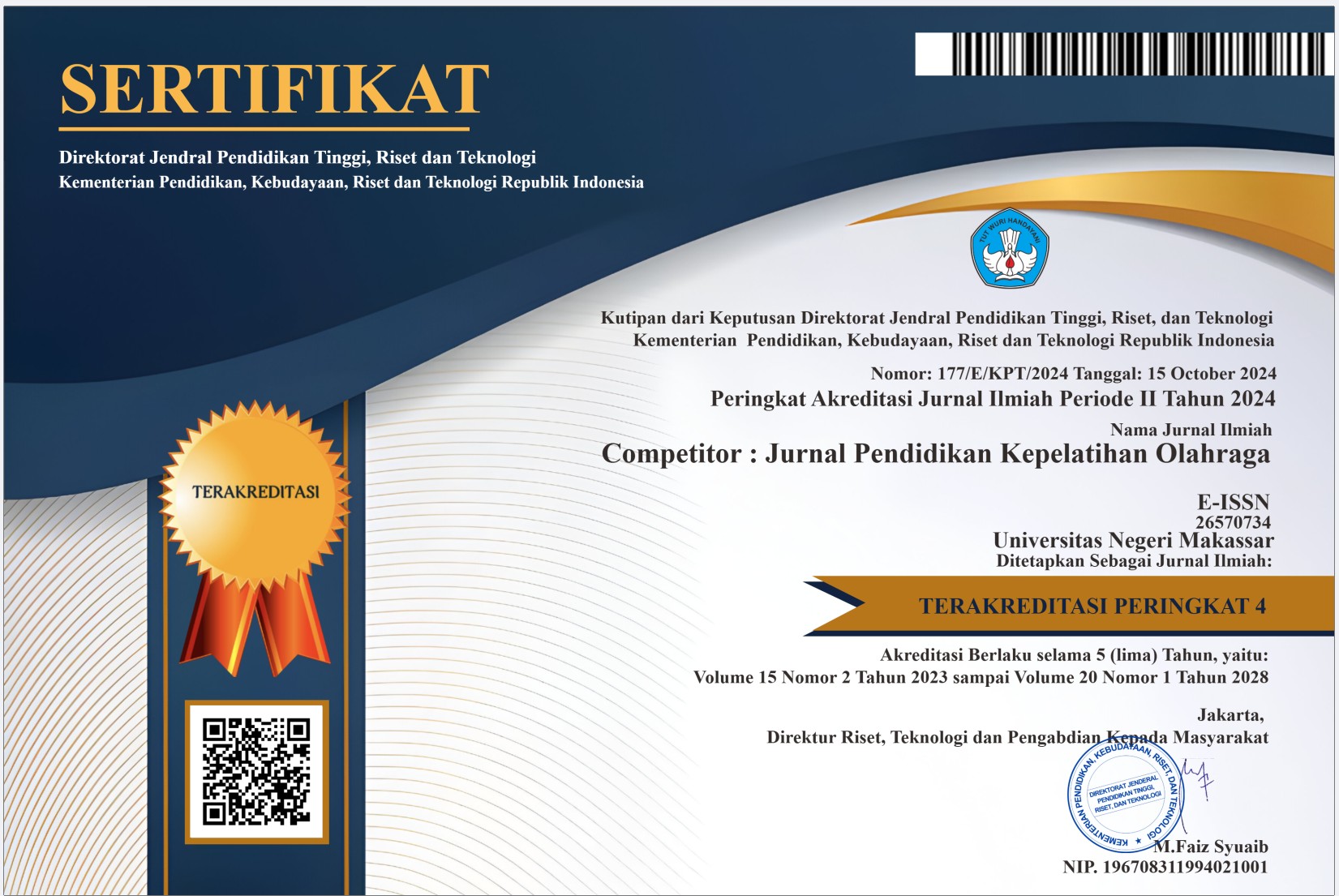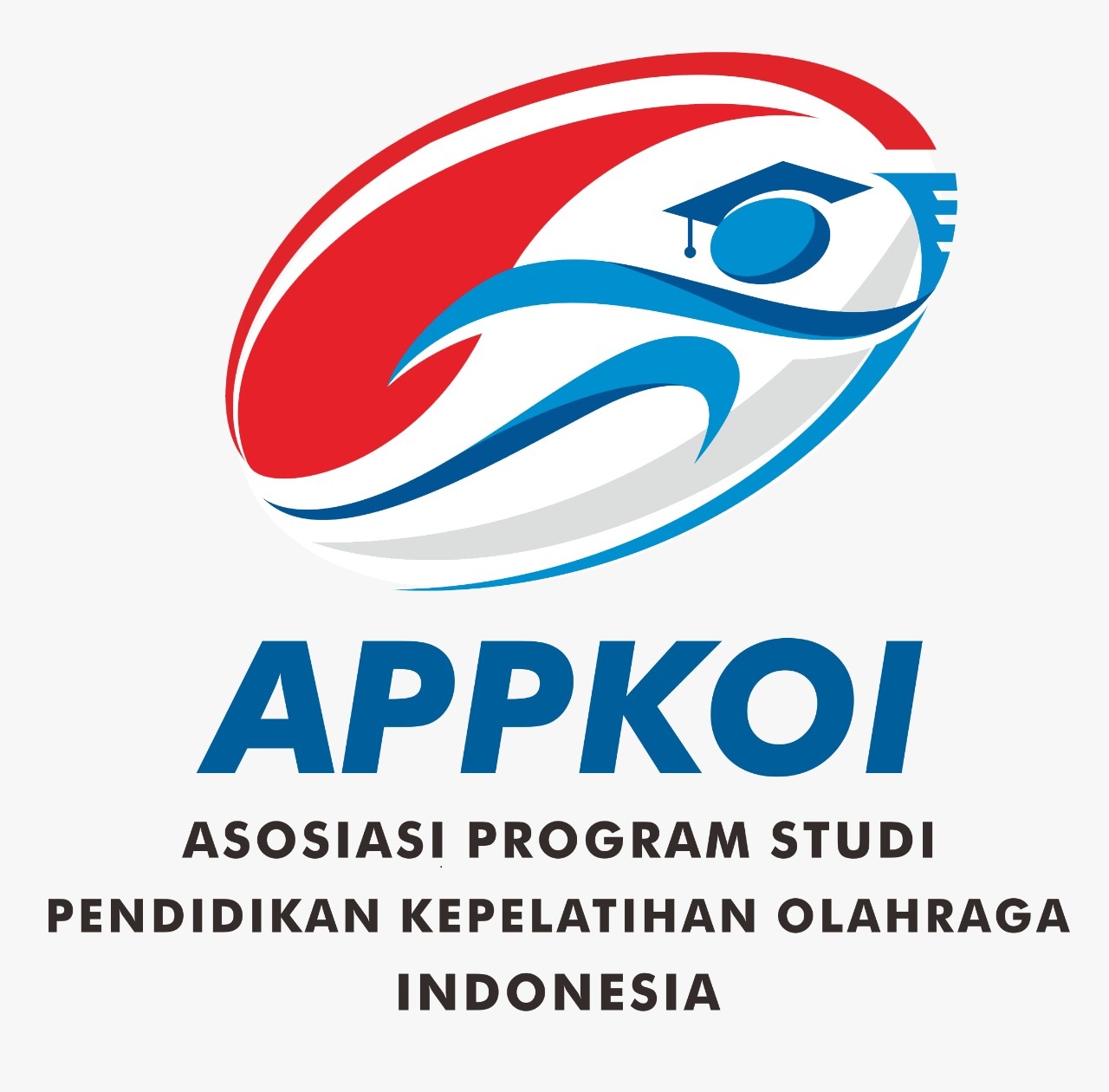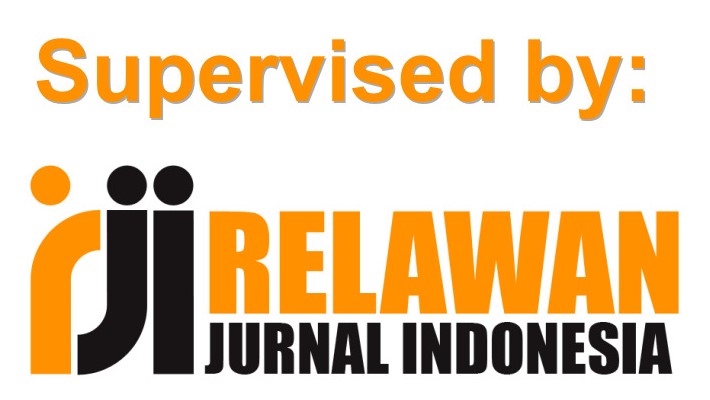The Impact of Interval Training and Leg Muscle on The Endurance Capacity of Football Players
DOI:
https://doi.org/10.26858/cjpko.v17i2.136Keywords:
Intensive Interval; Extensive Interval; Endurance; leg Muscle; Football Player.Abstract
This study aimed to assess the impact of lengthy and rigorous interval training methods on aerobic and anaerobic endurance by analyzing leg muscle endurance capabilities. The study employed a quasi-experimental design using a pretest-posttest methodology without a control group, involving 24 athletes under the age of 14, divided into 4 groups. The evaluation instruments utilized were the Balke test for aerobic endurance and the Running-Based Anaerobic Test (RAST) for anaerobic endurance. The studies conducted were the t-test and the ANOVA test. The study's findings revealed that T-test analysis showed a substantial effect on both aerobic and anaerobic endurance, with significance values of p=0.000 for extended training and p=0.000 for intensive interval training. The ANOVA test revealed no significant differences among the training methods, leg muscle endurance levels, or their interaction, as all significance values surpassed 0.005 (p>0.005). Both extensive and demanding interval training enhance anaerobic and aerobic endurance, with no significant distinction between the two approaches. Moreover, variations in leg muscle capacity influence both aerobic and anaerobic endurance; yet, there is no notable difference or interaction between the interval training method and the degree of leg muscular endurance.
References
Abassi, H., Gavotto, A., Picot, M. C., Bertet, H., Matecki, S., Guillaumont, S., Moniotte, S., Auquier, P., Moreau, J., & Amedro, P. (2019). Impaired pulmonary function and its association with clinical outcomes, exercise capacity and quality of life in children with congenital heart disease. International Journal of Cardiology, 285, 86–92. https://doi.org/10.1016/j.ijcard.2019.02.069
Adhi, B. P., & Soenyoto, T. (2017). Pengaruh Metode Latihan dan Kekuatan Otot Tungkai terhadap Power Otot Tungkai. Journal of Physical Education and Sports, 6(1). http://journal.unnes.ac.id/sju/index.php/jpes
Ahsan, M., & Ali, M. F. (2021). Determining the relationship between VO2max and explosive power of lower leg muscles in football and rugby university players. Journal of Physical Education and Sport, 21, 3149–3154. https://doi.org/10.7752/jpes.2021.s6419
Akbar, S., Soh, K. G., Jazaily Mohd Nasiruddin, N., Bashir, M., Cao, S., & Soh, K. L. (2022). Effects of neuromuscular training on athletes' physical fitness in sports: A systematic review. In Frontiers in Physiology (Vol. 13). Frontiers Media S.A. https://doi.org/10.3389/fphys.2022.939042
Alkayis, M. (2019). Perbedaan Pengaruh Latihan Interval Ekstensif Dan Intensif Terhadap Vo2max ( Eksperimen Pada Peserta Ekstrakulikuler Futsal SMA Negeri 1 Slawi Tahun 2019 ). Journal of Sport Coaching and Physical Education, 95–103. https://journal.unnes.ac.id/sju/index.php/jscpe
Appel, M., Zentgraf, K., Krüger, K., & Alack, K. (2021). Effects of Genetic Variation on Endurance Performance, Muscle Strength, and Injury Susceptibility in Sports: A Systematic Review. In Frontiers in Physiology (Vol. 12). Frontiers Media S.A. https://doi.org/10.3389/fphys.2021.694411
Arslan, E., Orer, G. E., & Clemente, F. M. (2020). Running-based high-intensity interval training vs. small-sided game training programs: Effects on the physical performance, psychophysiological responses and technical skills in young football players. Biology of Sport, 37(2), 165–173. https://doi.org/10.5114/BIOLSPORT.2020.94237
Astuti, Y., Zulbahri, Z., Erianti, E., & Rosmawati, R. (2020). Pelatihan Metode Interval Ekstensif Terhadap Kemampuan Daya Tahan Aerobik. Jurnal Abdidas, 1(3), 109–118. https://doi.org/10.31004/abdidas.v1i3.25
Behm, D. G., Alizadeh, S., Daneshjoo, A., & Konrad, A. (2023). Potential Effects of Dynamic Stretching on Injury Incidence of Athletes: A Narrative Review of Risk Factors. In Sports Medicine (Vol. 53, Issue 7, pp. 1359–1373). Springer Science and Business Media Deutschland GmbH. https://doi.org/10.1007/s40279-023-01847-8
Bıçakçı, B., Cięszczyk, P., & Humińska-Lisowska, K. (2024). Genetic Determinants of Endurance: A Narrative Review on Elite Athlete Status and Performance. In International Journal of Molecular Sciences (Vol. 25, Issue 23). Multidisciplinary Digital Publishing Institute (MDPI). https://doi.org/10.3390/ijms252313041
De Zwart, A. H., Dekker, J., Lems, W. F., Roorda, L. D., Van Der Esch, M., & Van Der Leeden, M. (2018). Factors associated with upper leg muscle strength in knee osteoarthritis: A scoping review. In Journal of Rehabilitation Medicine (Vol. 50, Issue 2, pp. 140–150). Foundation for Rehabilitation Information. https://doi.org/10.2340/16501977-2284
Di Giminiani, R., & Visca, C. (2017). Explosive strength and endurance adaptations in young elite football players during two football seasons. PLoS ONE, 12(2). https://doi.org/10.1371/journal.pone.0171734
Dolci, F., Hart, N. H., Kilding, A., Chivers, P., Piggott, B., & Spiteri, T. (2018). Movement economy in football: Current data and limitations. In Sports (Vol. 6, Issue 4). MDPI. https://doi.org/10.3390/sports6040124
Elamaran, M. (2015). Efficacy Of Intensive And Extensive Interval Training On Selected Biomotor Abilities Among Schoolboys. International Journal of Physical Education, 80–84.
Fanani, E., Yunus, M., Nilasari, K., & Suhartanti, A. S. (2025). Dampak Latihan Pound Fit terhadap Profil Lemak Tubuh dan Kebugaran Fisik Wanita Muda yang Kelebihan Berat Badan. Sport Science and Health, 7(4), 169–184. https://doi.org/10.17977/um062v7i42025p169-184
Faude, O., Koch, T., & Meyer, T. (2015). Straight sprinting is the most frequent action in goal situations in professional football. Journal of Sports Sciences, 30(7), 625–631. https://doi.org/10.1080/02640414.2012.665940
Feito, Y., Heinrich, K. M., Butcher, S. J., & Carlos Poston, W. S. (2018). High-intensity functional training (Hift): Definition and research implications for improved fitness. In Sports (Vol. 6, Issue 3). MDPI. https://doi.org/10.3390/sports6030076
Fereday, K., Hills, S. P., Russell, M., Smith, J., Cunningham, D. J., Shearer, D., McNarry, M., & Kilduff, L. P. (2020). A comparison of rolling averages versus discrete time epochs for assessing the worst-case scenario locomotor demands of professional football match-play. Journal of Science and Medicine in Sport, 23(8), 764–769. https://doi.org/10.1016/j.jsams.2020.01.002
Franchini, E., Cormack, S., & Takito, M. Y. (2018). Effects Of High-Intensity Interval Training On Olympic Combat Sports Athletes’ Performance And Physiological Adaptation: A Systematic Review. Journal of Strength and Conditioning Research, 33(1), 242–252.
García-Hermoso, A., Cerrillo-Urbina, A. J., Herrera-Valenzuela, T., Cristi-Montero, C., Saavedra, J. M., & Martínez-Vizcaíno, V. (2016). Is high-intensity interval training more effective in improving cardiometabolic risk and aerobic capacity than other forms of exercise in overweight and obese youth? A meta-analysis. Obesity Reviews, 17(6), 531–540. https://doi.org/10.1111/obr.12395
Gillen, J. B., & Gibala, M. J. (2015). High-intensity interval training: a time-efficient exercise strategy to improve health and 1 fitness? Applied Physiology Nutrition Metabolism, 9(1), 1–14.
Haugen, T., Seiler, S., Sandbakk, Ø., & Tønnessen, E. (2019). The Training and Development of Elite Sprint Performance: An Integration of Scientific and Best Practice Literature. In Sports Medicine - Open (Vol. 5, Issue 1). Springer. https://doi.org/10.1186/s40798-019-0221-0
Hoppe, M. W., Barnics, V., Freiwald, J., & Baumgart, C. (2020). Contrary to endurance, power-associated capacities differ between different-aged and starting-nonstarting elite junior football players. PLoS ONE, 15(4). https://doi.org/10.1371/journal.pone.0232118
Joyner, M. J., & Dominelli, P. B. (2021). The central cardiovascular system is limited to aerobic capacity. Experimental Physiology, 106(12), 2299–2303. https://doi.org/10.1113/EP088187
Jukic, I., Prnjak, K., Zoellner, A., Tufano, J. J., Sekulic, D., & Salaj, S. (2019). The importance of fundamental motor skills in identifying differences in performance levels of U10 football players. Sports, 7(7). https://doi.org/10.3390/sports7070178
Karthikeyan, P. (2024). Impact of Intensive Interval Training and Extensive Interval Training on Selected Speed and Cardio Respiratory Endurance. International Journal of Physical Education, Sports Management and Yogic Sciences, 14(1), 51–58. https://doi.org/10.5958/2278-795X.2024.00006.7
Ketut Wartika, I., Made Candiasa, I., & Ketut Suarni, N. (2015). Pengaruh Penerapan Model Pembelajaran Kooperatif Tipe Stad Berbasis Asesmen Kinerja Terhadap Hasil Belajar Fisika Ditinjau Dari Sikap Ilmiah (Studi Eksperimen Pada Siswa Kelas XI IPA SMA Negeri 1 Kuta). Jurnal Penelitian Dan Evaluasi Pendidikan Indonesia, 4(1), 1–12.
Kusuma, K. C. A., Artanayasa, I. W., Sudiana, I. K., & Yudi, A. A. (2023). Enhancing anaerobic endurance in football players: A comparative study of 3-a-side and 5-a-side small-sided games. Journal Sport Area, 8(3), 318–327. https://doi.org/10.25299/sportarea.2023.vol8(3).13150
Mackała, K., Kurzaj, M., Okrzymowska, P., Stodółka, J., Coh, M., & Rożek-Piechura, K. (2020). The effect of respiratory muscle training on the pulmonary function, lung ventilation, and endurance performance of young football players. International Journal of Environmental Research and Public Health, 17(1). https://doi.org/10.3390/ijerph17010234
Milanović, Z., Sporiš, G., & Weston, M. (2015). Effectiveness of High-Intensity Interval Training (HIT) and Continuous Endurance Training for VO2max Improvements: A Systematic Review and Meta-Analysis of Controlled Trials. In Sports Medicine (Vol. 45, Issue 10, pp. 1469–1481). Springer International Publishing. https://doi.org/10.1007/s40279-015-0365-0
Mohamed, A. A., & Alawna, M. (2020). Role of increasing the aerobic capacity on improving the function of immune and respiratory systems in patients with coronavirus (COVID-19): A review. Diabetes and Metabolic Syndrome: Clinical Research and Reviews, 14(4), 489–496. https://doi.org/10.1016/j.dsx.2020.04.038
Murphy, J. R., Button, D. C., Chaouachi, A., & Behm, D. G. (2015). Prepubescent males are less susceptible to neuromuscular fatigue following resistance exercise. European Journal of Applied Physiology, 114(4), 825–835. https://doi.org/10.1007/s00421-013-2809-2
Pandey, A., & Kitzman, D. W. (2021). Searching for the Optimal Exercise Training Regimen in Heart Failure With Preserved Ejection Fraction. JAMA, 325(6), 537. https://doi.org/10.1001/jama.2020.26347
Polak, E., & Wojtuń-Sikora, B. (2022). Changes in motor skills among early school-aged girls under the influence of regularly practised dance. Research in Dance Education, 23(3), 300–315. https://doi.org/10.1080/14647893.2020.1867089
Prakoso, G. P. W., & Sugiyanto, F. (2017). Pengaruh metode latihan dan daya tahan otot tungkai terhadap hasil peningkatan kapasitas VO2Max pemain bola basket. Jurnal Keolahragaan, 5(2), 151. https://doi.org/10.21831/jk.v5i2.10177
Radtke, T., Nevitt, S. J., Hebestreit, H., & Kriemler, S. (2017). Physical exercise training for cystic fibrosis. Cochrane Database of Systematic Reviews, 11, 1–176. https://doi.org/10.1002/14651858.CD002768.pub4
Romain, A. J., Fankam, C., Karelis, A. D., Letendre, E., Mikolajczak, G., Stip, E., & Abdel-Baki, A. (2019). Effects of high-intensity interval training among overweight individuals with psychotic disorders: A randomised controlled trial. Schizophrenia Research, 210, 278–286. https://doi.org/10.1016/j.schres.2018.12.021
Romero-Gallardo, L., Roldan Reoyo, O., Castro-Piñero, J., May, L. E., Ocón-Hernández, O., Mottola, M. F., Aparicio, V. A., & Soriano-Maldonado, A. (2022). Assessment of physical fitness during pregnancy: validity and reliability of fitness tests, and relationship with maternal and neonatal health - a systematic review. BMJ Open Sport and Exercise Medicine, 8(3), 1–15. https://doi.org/10.1136/bmjsem-2022-001318
Rum Bismar, A., Adnan Hudain, M., & Ridwan, A. (2025). The Effect of Single-Leg and Double-Leg Hurdle Jumps on Shooting Speed. 17(2), 654–663. https://doi.org/10.26858/cjpko.v17i2.71402
Sari, A. P., Bafirman, Rifki, M. S., Syafrianto, D., & Kurniawan, R. (2023). The impact of Maumere gymnastics on blood pressure reduction in hypertensive patients: A promising non-pharmacological intervention. Journal Sport Area, 8(3), 328–339. https://doi.org/10.25299/sportarea.2023.vol8(3).11727
Seçer, E., & Özer Kaya, D. (2022). Comparison of Immediate Effects of Foam Rolling and Dynamic Stretching to Only Dynamic Stretching on Flexibility, Balance, and Agility in Male Football Players. Journal of Sport Rehabilitation, 31(1), 10–16. https://doi.org/10.1123/jsr.2021-0017
Shiu, Y. J., Chen, C. H., Tao, W. S., Nai, H. F., Yu, C. Y., & Chiu, C. H. (2024). Acute ingestion of caffeinated chewing gum reduces fatigue index and improves 400-meter performance in trained sprinters: a double-blind crossover trial. Journal of the International Society of Sports Nutrition, 21(1), 2414871. https://doi.org/10.1080/15502783.2024.2414871
Sulastio, A. (2016). PENGARUH METODE LATIHAN INTERVAL EKSTENSIF DAN INTENSIF TERHADAP PRESTASI LARI 400 METER PUTRA ATLET PASI RIAU. Journal Sport Area Penjaskesrek FKIP Universitas Islam Riau.
Yamin, A., & Gusril. (2020). Pengaruh Latihan Interval Intensif Dan Interval Ekstensif Terhadap Peningkatan Volume Oksigen Maksimal (Vo2 Max) Pemain Sekolah Sepak Bola Pengcab Mandailing Natal. JURNAL STAMINA, 3(1), 17–30.
Downloads
Published
Issue
Section
License
Copyright (c) 2025 Riski Septa Jatmikanto, Ria Lumintuarso (Author)

This work is licensed under a Creative Commons Attribution 4.0 International License.





















